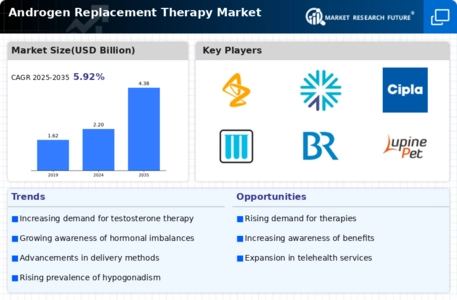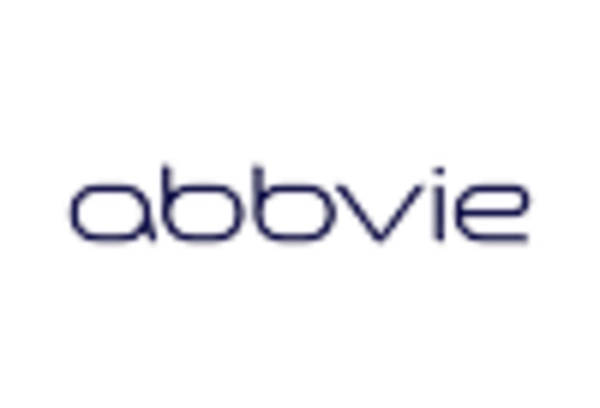Regulatory Support and Approval
Regulatory support and approval for androgen replacement therapies are playing a pivotal role in the growth of the Androgen Replacement Therapy Market. As health authorities recognize the therapeutic benefits of these treatments, there has been a trend towards streamlined approval processes for new formulations and delivery methods. This regulatory environment encourages pharmaceutical companies to invest in research and development, leading to a wider array of treatment options for patients. Recent approvals of novel therapies have expanded the market landscape, making it more competitive and diverse. As regulatory bodies continue to support innovation in this field, the market is likely to see sustained growth and increased accessibility for patients.
Advancements in Drug Formulations
Innovations in drug formulations are significantly influencing the Androgen Replacement Therapy Market. The development of new delivery methods, such as transdermal patches, gels, and long-acting injections, is enhancing patient compliance and satisfaction. These advancements allow for more convenient administration and improved pharmacokinetics, which can lead to better therapeutic outcomes. Market data suggests that the transdermal segment is expected to witness substantial growth, potentially capturing a significant share of the market. As these novel formulations become more widely available, they are likely to attract a broader demographic, including younger patients and those hesitant to use traditional methods.
Increasing Awareness and Education
The Androgen Replacement Therapy Market is benefiting from a surge in awareness and education regarding male hormonal health. Campaigns aimed at educating both healthcare professionals and the public about the symptoms and treatment options for testosterone deficiency are gaining traction. This increased awareness is likely to lead to more diagnoses and, consequently, a higher demand for androgen replacement therapies. Reports indicate that educational initiatives have resulted in a notable increase in consultations for hormonal assessments. As more individuals recognize the importance of maintaining hormonal balance, the market for androgen replacement therapies is expected to expand, driven by informed patients seeking treatment.
Aging Population and Lifestyle Changes
The demographic shift towards an aging population is a critical driver for the Androgen Replacement Therapy Market. As individuals age, the natural decline in testosterone levels can lead to various health issues, prompting the need for androgen replacement therapies. Additionally, lifestyle changes, such as increased stress and sedentary behavior, are contributing to hormonal imbalances. Data indicates that the population aged 65 and older is projected to double by 2050, which could significantly increase the demand for androgen therapies. This demographic trend, coupled with changing lifestyle factors, suggests a robust market potential for androgen replacement therapies in the coming years.
Rising Incidence of Hormonal Disorders
The Androgen Replacement Therapy Market is experiencing growth due to the increasing prevalence of hormonal disorders, particularly among aging populations. Conditions such as hypogonadism and testosterone deficiency are becoming more common, leading to a heightened demand for androgen replacement therapies. According to recent estimates, the incidence of testosterone deficiency in men over 40 years old is approximately 20 to 30 percent. This trend is likely to drive the market as healthcare providers seek effective treatment options to address these conditions. Furthermore, the awareness surrounding hormonal health is growing, prompting more individuals to seek medical advice and treatment, thereby expanding the patient base for androgen replacement therapies.

















Leave a Comment